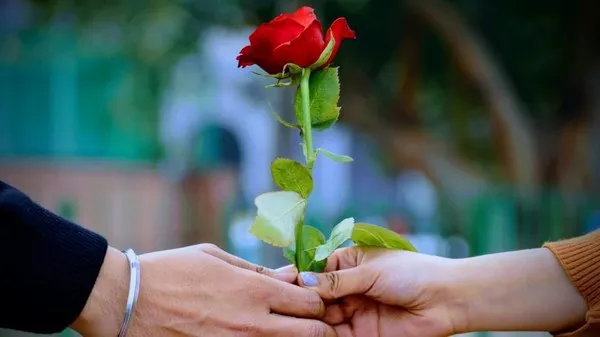Flowers have been cherished by humans for centuries. They adorn our gardens, brighten our homes, and convey heartfelt emotions. Among the myriad of blossoms, one particular category stands out as the undisputed star of the cut flower industry: the rose. In this article, we will delve into the world of roses, exploring their history, popularity, cultivation, and their impact on various aspects of human life and culture.
Roses Through the Ages
The rose, scientifically known as Rosa, has a rich and storied history dating back over 5,000 years. Its cultivation can be traced to ancient civilizations like the Greeks, Romans, and Egyptians, who revered it for its beauty and fragrant scent. Over the centuries, the rose has been associated with love, beauty, and even politics. It was adopted as a symbol of various royal houses, and during the War of the Roses in 15th century England, the red and white roses were used to represent the opposing factions of Lancaster and York, respectively.
The Reigning Champion: Why Roses Are the Most Popular Cut Flower
1. Unrivaled Beauty and Variety
Roses come in a wide spectrum of colors and varieties, making them incredibly versatile and suitable for various occasions. From classic red roses symbolizing love to soft pink roses signifying gratitude and admiration, or vibrant yellow roses representing friendship, there’s a rose for every sentiment. This versatility contributes significantly to their popularity.
2. Longevity and Fragrance
Roses are renowned for their long vase life, allowing people to enjoy their beauty for an extended period. Additionally, their sweet, fragrant aroma can fill a room with an enchanting scent that enhances any environment. These attributes make roses an ideal choice for floral arrangements and gifts.
3. Symbolism and Sentiment
The rose’s symbolism has endured through generations, making it a beloved flower for expressing emotions. From romantic love to condolences, roses are an eloquent means of conveying sentiments. Their significance has led to an enduring demand for rose bouquets on various occasions, such as weddings, anniversaries, and funerals.
4. Cultivation and Availability
Roses are cultivated worldwide, and advancements in horticulture have made them more accessible year-round. This widespread availability ensures that roses remain a staple in the cut flower industry, with florists and consumers alike having access to a constant supply.
The Business of Roses: A Blossoming Industry
The global cut flower market is a thriving industry valued at billions of dollars. Within this lucrative sector, roses maintain their top position as the most sought-after flower. Their popularity has led to a robust supply chain and diverse business opportunities.
1. Commercial Cultivation
Rose cultivation is a significant agricultural endeavor in many countries, from Colombia and Ecuador to the Netherlands and Kenya. These countries have ideal climates and conditions for large-scale rose production. The cultivation of roses for the cut flower industry has created jobs, boosted local economies, and generated revenue through exports.
2. Floral Retail and Floristry
Florists worldwide rely heavily on roses due to their consistent demand. The floral retail industry thrives on occasions that require rose arrangements, from Valentine’s Day to Mother’s Day and beyond. This creates a steady income stream for florists and flower shops.
3. International Trade
Roses are among the most traded flowers globally. They are exported and imported in vast quantities to meet consumer demands. International trade in roses strengthens diplomatic and economic ties between nations, further emphasizing their significance.
The Future of Roses in the Cut Flower Industry
As the world evolves, so too does the cut flower industry. Emerging trends and technologies are shaping the future of roses as a popular cut flower.
1. Sustainability and Eco-Friendly Practices
Consumers are increasingly conscious of the environmental impact of their purchases. This trend is driving the adoption of sustainable and eco-friendly practices in rose cultivation and distribution.
2. Online Retail and E-commerce
The rise of e-commerce has transformed the flower industry. Online platforms and flower delivery services make it easier than ever for consumers to access a wide variety of roses, regardless of their location.
3. Personalization and Customization
Consumers are seeking more personalized and unique flower arrangements. The ability to customize bouquets and arrangements according to individual preferences is becoming a key selling point for florists and retailers.
Conclusion
In the realm of cut flowers, roses reign supreme. Their beauty, fragrance, and symbolism have made them the go-to choice for expressing emotions and enhancing various aspects of human life and culture. As the cut flower industry evolves with a focus on sustainability, technology, and personalization, roses continue to thrive, proving that their timeless elegance knows no bounds. Whether in a wedding bouquet, a heartfelt gift, or a piece of art, the rose remains a symbol of love, beauty, and enduring human connection.


